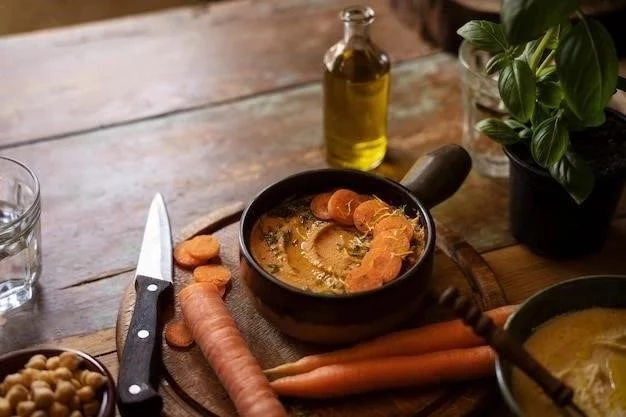
Irish stew‚ a humble yet hearty dish‚ stands as a testament to the resilience and ingenuity of the Irish people‚ particularly during periods of hardship and poverty․ Its origins lie deep within the Irish peasantry‚ a segment of society that historically shaped the nation’s culinary landscape․ This essay delves into the historical context of Irish stew‚ exploring its origins‚ ingredients‚ and cultural significance as a reflection of Ireland’s peasant roots․
A Culinary Legacy of Poverty and Resilience
To understand Irish stew‚ one must first grasp the historical realities of Irish peasantry․ For centuries‚ the Irish peasantry lived in a state of precarious existence‚ often grappling with poverty‚ landlessness‚ and famine․ Their diet was largely dictated by the availability of local ingredients‚ primarily potatoes‚ oats‚ and whatever meager amounts of meat they could afford․
Irish stew emerged as a practical and resourceful solution to these limitations․ It provided a means of utilizing readily available ingredients‚ transforming simple‚ often overlooked components into a nourishing and satisfying meal․ The dish’s simplicity and adaptability allowed it to be prepared in various ways‚ depending on the resources at hand․
The Humble Ingredients⁚ A Reflection of Irish Life
The ingredients of traditional Irish stew are a testament to the constraints faced by the Irish peasantry․ Potatoes‚ the staple food of the poor‚ form the base of the dish․ Their abundance and affordability made them a cornerstone of Irish cuisine‚ particularly during times of scarcity․
Meat‚ however‚ was a luxury․ The Irish peasantry often relied on lamb‚ mutton‚ or beef‚ typically obtained from older‚ less desirable animals․ These cuts‚ often tougher and less tender‚ required longer cooking times‚ giving rise to the slow-simmering process that characterizes Irish stew․
Other ingredients‚ such as onions‚ carrots‚ and herbs‚ added flavor and nutritional value to the dish․ These vegetables were readily available and provided a welcome source of vitamins and minerals․
The Art of Slow Cooking⁚ Transforming Humble Ingredients
The slow cooking process‚ a hallmark of Irish stew‚ played a crucial role in transforming tough cuts of meat into tender and flavorful morsels․ The gentle heat and extended cooking time allowed the collagen and connective tissues in the meat to break down‚ resulting in a rich and succulent broth․
The slow cooking process also facilitated the blending of flavors․ The potatoes absorbed the savory broth‚ becoming soft and creamy‚ while the vegetables released their natural sweetness‚ creating a harmonious blend of textures and tastes․
Beyond the Kitchen⁚ Irish Stew’s Cultural Significance
Irish stew transcended its culinary function‚ becoming a symbol of Irish culture and heritage․ It represented the resourcefulness and resilience of the Irish people‚ their ability to create sustenance from limited resources․ The dish’s simplicity and familiarity made it a unifying force‚ bringing families and communities together around a shared meal․
The dish’s enduring popularity‚ both in Ireland and abroad‚ speaks to its cultural significance․ It has become synonymous with Irish cuisine‚ a culinary ambassador that embodies the nation’s history‚ traditions‚ and values․
From Peasant Table to Global Cuisine
While Irish stew originated within the confines of Irish peasant life‚ its influence has extended far beyond its humble beginnings․ The dish has evolved over time‚ incorporating regional variations and adaptations․
Today‚ Irish stew is enjoyed worldwide‚ a testament to its enduring appeal․ It has become a staple of Irish restaurants and pubs‚ a beloved comfort food that evokes a sense of nostalgia and familiarity․
A Culinary Legacy⁚ Honoring the Past‚ Embracing the Future
Irish stew stands as a powerful reminder of the resilience and ingenuity of the Irish people․ It embodies their ability to transform simple ingredients into a nourishing and satisfying meal‚ a testament to their resourcefulness and adaptability․
As we savor the flavors of Irish stew‚ we pay homage to the generations of Irish peasants who shaped its culinary legacy․ Their hard work‚ resourcefulness‚ and unwavering spirit continue to inspire us today‚ reminding us of the power of simplicity‚ tradition‚ and the enduring bond between food and culture․

Autor przedstawia przekonującą analizę irlandzkiego gulaszu jako symbolu pomysłowości i umiejętności wykorzystania dostępnych zasobów. Szczegółowe omówienie składników i ich historycznego znaczenia dodaje wartości analizie. Tekst jest dobrze napisany i angażujący, zachęca do dalszego zgłębiania tematu.
Autor przedstawia przekonującą analizę irlandzkiego gulaszu jako odzwierciedlenia trudnej sytuacji materialnej irlandzkich chłopów. Szczegółowe omówienie składników i ich znaczenia w kontekście historycznym jest cenne. Tekst jest dobrze napisany i angażujący, zachęca do dalszego zgłębiania tematu.
Artykuł stanowi interesujące spojrzenie na historię irlandzkiego gulaszu, podkreślając jego rolę w życiu irlandzkiej biedoty. Szczegółowe omówienie składników i ich znaczenia w kontekście historycznym dodaje wartości analizie. Autor zręcznie łączy aspekty kulinarne z kontekstem społeczno-ekonomicznym, co czyni tekst angażującym i pouczającym.
Artykuł stanowi wartościowe spojrzenie na historię irlandzkiego gulaszu, podkreślając jego rolę w życiu codziennym irlandzkiej biedoty. Autor zręcznie łączy aspekty kulinarne z kontekstem społeczno-ekonomicznym, co czyni tekst interesującym i pouczającym. Dobrze dobrana terminologia wzbogaca analizę.
Artykuł stanowi interesujące spojrzenie na historię irlandzkiego gulaszu, podkreślając jego rolę w życiu codziennym irlandzkiej ludności wiejskiej. Autor zręcznie łączy aspekty kulinarne z kontekstem społeczno-ekonomicznym, co czyni tekst pouczającym i angażującym. Dobrze dobrana terminologia wzbogaca analizę.
Autor przedstawia przekonującą analizę irlandzkiego gulaszu jako odzwierciedlenia trudnej sytuacji materialnej irlandzkich chłopów. Szczegółowe omówienie składników i ich historycznego znaczenia dodaje wartości analizie. Tekst jest dobrze napisany i angażujący, zachęca do dalszego zgłębiania tematu.
Prezentacja irlandzkiego gulaszu jako symbolu trudności i pomysłowości irlandzkiej ludności wiejskiej jest przekonująca. Autor umiejętnie odwołuje się do historycznego kontekstu, jasno pokazując jak ograniczenia w dostępie do żywności wpłynęły na powstanie i ewolucję tego dania. Tekst jest dobrze zorganizowany i czytelny.